In an era of heightened personal safety concerns, concealed weapon detection, particularly for compact slider stun guns, is crucial for security measures. While airport metal detectors offer some protection, advanced technology and tailored techniques are needed to swiftly identify these tiny but potent self-defense tools. This text emphasizes the importance of developing efficient methods for slider stun gun detection, empowering law enforcement, security personnel, and individuals to recognize and respond promptly to potential threats. Technological advancements like radar, ultrasound, machine learning algorithms, and artificial intelligence (AI) aim to counter the challenges posed by these concealed weapons while balancing public safety and individual privacy rights.
The hidden presence of concealed stun guns poses a significant challenge in maintaining public safety. This article delves into the complex world of stun gun detection, focusing on the evolving technology and unique deterrents presented by slider stun guns. We explore the legal and ethical dimensions, highlighting the delicate balance between ensuring security and safeguarding privacy rights. Furthermore, we gaze into the future, examining innovative solutions that may shape advanced detection systems, ultimately aiming to enhance societal safety in the face of these concealed threats.
- Understanding Concealed Stun Gun Detection: A Necessary Overview
- The Evolution of Stun Gun Technology and Its Impact on Detection
- Challenges in Detecting Slider Stun Guns: Unique Features and Countermeasures
- Legal and Ethical Considerations: Balancing Safety and Privacy Rights
- Future Prospects: Innovative Solutions for Advanced Detection Systems
Understanding Concealed Stun Gun Detection: A Necessary Overview
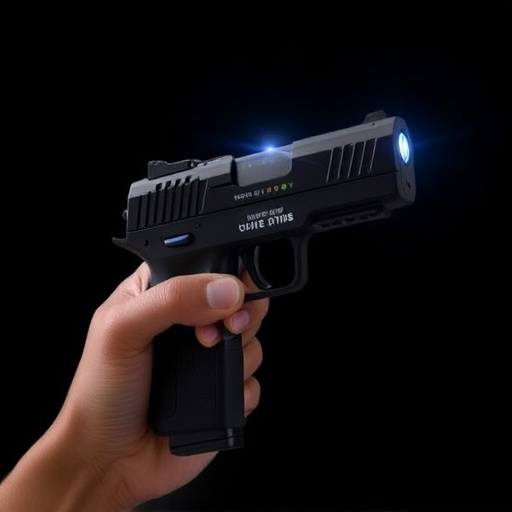
In today’s world, where personal safety is a growing concern, concealed weapon detection has become an essential aspect of security measures. This is particularly relevant when it comes to stun guns, which are compact and easily hidden devices designed for self-defense. A slider stun gun, for instance, is a type that deploys quickly and efficiently, but its small size also presents a unique challenge—detection.
The ability to identify and locate these concealed weapons promptly is crucial for maintaining public safety and preventing potential harm. It’s not just about metal detectors at airport security; it involves sophisticated technology and techniques tailored to the specific properties of stun guns. This overview aims to shed light on the importance of developing effective methods for concealed stun gun detection, ensuring that law enforcement, security personnel, and even individuals have the means to recognize and respond to such devices when needed.
The Evolution of Stun Gun Technology and Its Impact on Detection
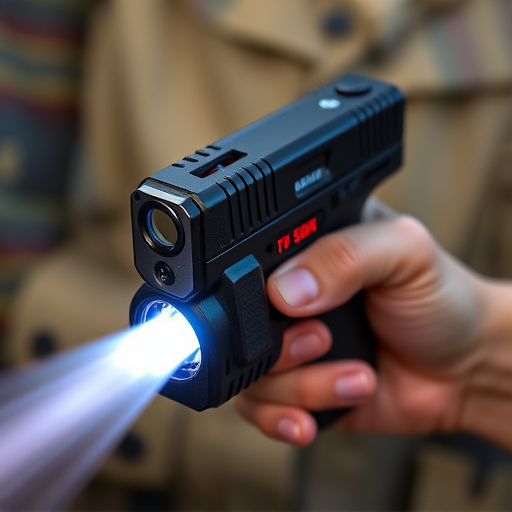
The evolution of stun gun technology has been a response to growing concerns about personal safety, leading to advancements in both effectiveness and concealment. Traditional stun guns have made significant strides from their early forms, becoming smaller, more compact devices that can easily fit into a pocket or hidden under clothing. This evolution has brought about innovative designs like the slider stun gun, which offers enhanced discretion. The sleek profile allows users to carry it without drawing attention, addressing the need for a concealed defense option.
As technology progresses, the focus on detection and prevention intensifies. Advanced materials and engineering have improved the efficiency of stun guns, making them more powerful while maintaining user-friendly features. However, this progress also raises challenges in terms of detection methods. With stun guns becoming smaller and more concealable, identifying their presence becomes a complex task, requiring sophisticated techniques to ensure public safety without infringing on personal privacy.
Challenges in Detecting Slider Stun Guns: Unique Features and Countermeasures
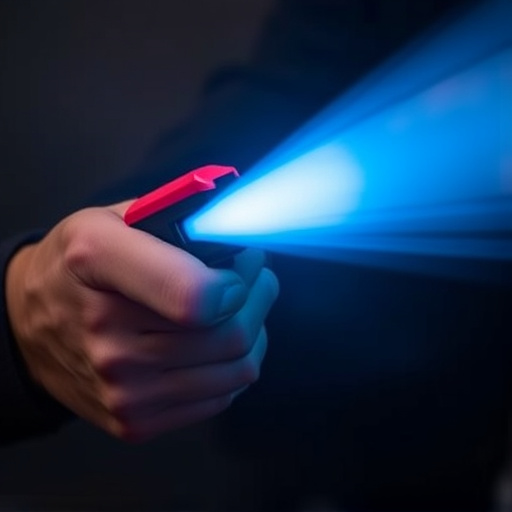
Detecting slider stun guns presents a unique set of challenges compared to traditional stun devices. These compact and sleek weapons are designed to be easily concealed, often fitting comfortably in a palm or hidden within everyday objects like pens or keychains. Their small size and ability to slide open make them difficult to identify visually, especially when the user keeps them fully retracted. This concealment is a double-edged sword; while it aids in secretive carry, it also hampers traditional detection methods relying on visible inspection or metal detectors.
To counter these challenges, advanced sensor technologies are being developed. Some systems employ specialized radar or ultrasound sensors that can penetrate materials to detect the unique energy signatures emitted by stun guns. Other approaches include using machine learning algorithms to analyze patterns in electromagnetic fields generated by active devices. Additionally, combining these technological advancements with robust screening procedures at public venues could significantly enhance security measures against slider stun gun threats.
Legal and Ethical Considerations: Balancing Safety and Privacy Rights
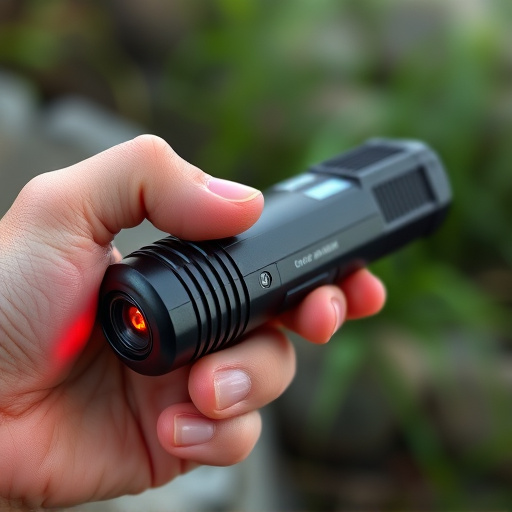
The detection of concealed stun guns raises complex legal and ethical questions, particularly in balancing individual privacy rights with public safety concerns. As slider stun guns become more accessible to the general public, law enforcement agencies and government bodies are faced with the challenge of establishing effective detection methods while respecting citizen freedoms. One of the primary considerations is the right to carry self-defense weapons, a constitutional entitlement that varies across jurisdictions. Striking a balance between allowing individuals to protect themselves and ensuring public safety during situations like active shooter incidents or police interactions is an ongoing debate.
Additionally, the ethical implications of implementing advanced stun gun detection technologies require careful thought. Privacy advocates argue that widespread use of such devices could lead to potential abuses of power, especially in high-surveillance areas. The concern lies in preventing a scenario where citizens feel constantly monitored, infringing upon their right to privacy. Therefore, any technological advancements in slider stun gun detection must be accompanied by stringent regulations and oversight to safeguard against both safety and privacy breaches.
Future Prospects: Innovative Solutions for Advanced Detection Systems
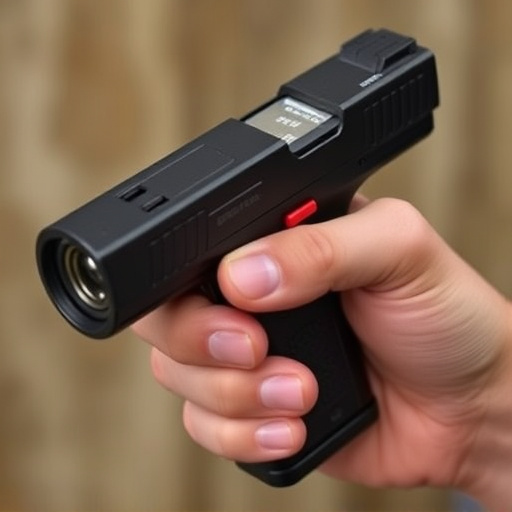
As technology advances, the future of concealed weapon detection looks promising with innovations like slider stun guns and enhanced sensor systems. Researchers are developing more sophisticated methods to address the challenges posed by evolving weapons designs. One such approach involves incorporating advanced materials and design concepts that can detect unique energy signatures emitted by stun guns, improving accuracy and reliability.
Additionally, integration of artificial intelligence (AI) algorithms promises to revolutionize detection processes. AI-powered systems can analyze vast amounts of data, learn from new inputs, and adapt to various environments, making them highly effective in identifying concealed stun guns. These innovative solutions aim to stay ahead of potential threats, ensuring the safety of public spaces and individuals by providing more efficient and precise weapon detection mechanisms.
The evolving landscape of concealed weapon detection, particularly focusing on slider stun guns, underscores the delicate balance between public safety and individual privacy rights. As technology advances, innovative solutions like enhanced sensor capabilities and improved scanning techniques will be crucial in navigating this complex issue. By embracing cutting-edge research and fostering open dialogue, we can strive for comprehensive detection systems that safeguard communities without infringing upon personal freedoms. This continuous pursuit of advancement, as highlighted by the discussion on slider stun guns, is a testament to our commitment to creating safer environments while preserving civil liberties.
